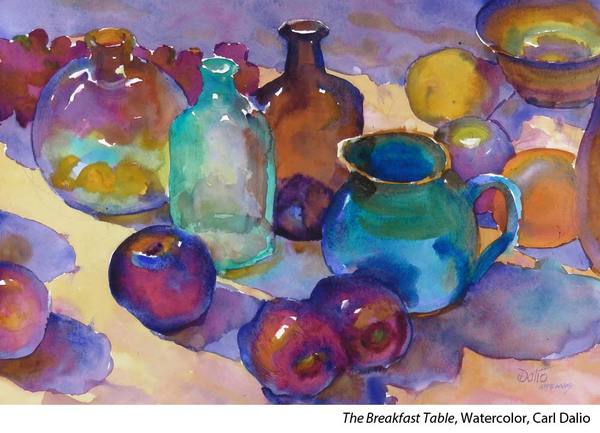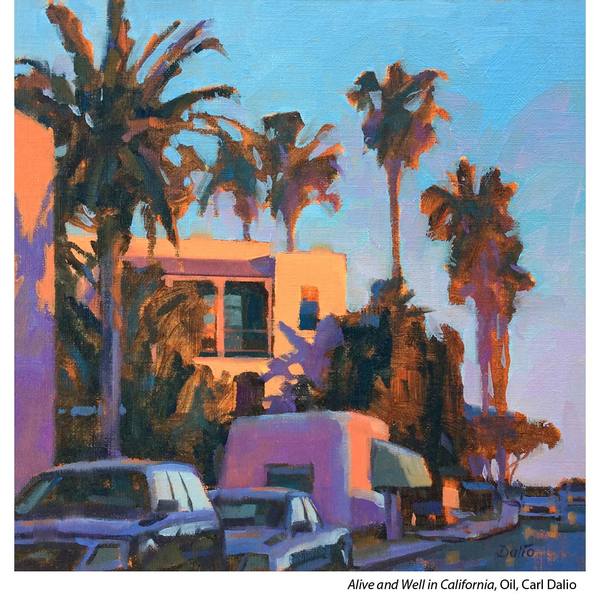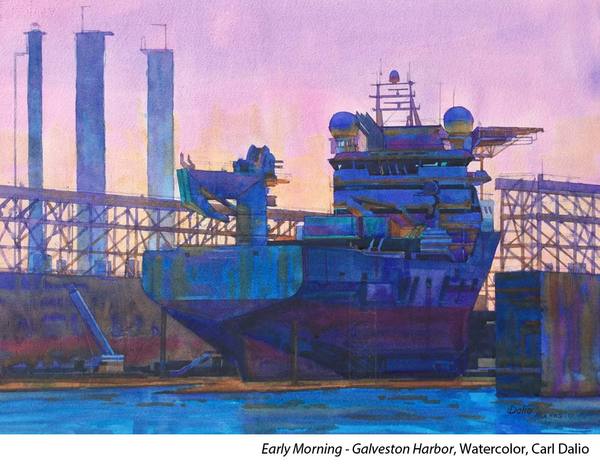Early Influences
“Some of the most impressive watercolors that first inspired me to explore this medium were those by John Singer Sargent, Winslow Homer, Edward Hopper, Andrew Wyeth and Charles Reid, to name a few,” says Carl Dalio. “There was an amazing sense of luminosity, directness, freedom, and richness of color that was on full display in their paintings. Working in watercolor, I feel in touch with the energy and pleasure these artists must have experienced often as they produced their work.”

Planning Colors in a Painting
“Every subject and every painting presents a new opportunity for color responses. Generally, I look for and utilize local color. That said, the rebel in me soon tries to change the status quo. For example, instead of the supposed, ho-hum of existing color, I may choose an initial, surprise color in one area to shake up my own ship. I’ll use that color as a stepping stone to make a color choice for the next part of the painting. It’s like crossing a small stream. Instead of preplanning every step in my progress, I place one stone out in front, step on that one, and look around, and hopefully discover where to place the next one. Feedback, intuition and experience reign.
“I pay close attention to color temperature. Everywhere I look I see amazing warm and cool fluctuations in color. Variations are due to the influence of light and reflections from the surrounding environment. Warms and cools can appear somewhat subtle or strikingly intense. This color phenomenon is recorded in our subconscious. I want to consciously communicate these magnificent shifts of temperature in my paintings. To achieve this, I often focus on complimentary colors. What adjacent or surrounding color will enhance or subdue the color I choose? How can I fire up or cool down one color by using a neighboring color?”

Beginners’ Biggest Challenge With Color
“I see color as a multi-pronged challenge for some students who come to my workshops. Careful observation regarding the effects of light, abundant experience with color mixing, basic understanding of the color wheel, knowledge about possible color schemes and trusting in one’s on-board intuition are some answers to the challenge. For most of us, it takes hours behind the brush to gain the confidence to choose pleasing color. Success and failure will occur and is the only route to new illuminations about color combinations. Take note of stimulating color schemes in the world around us. Analyze how other artists have used color to their advantage. Make memory notes about workable color mixes and combinations and file them in your mental toolkit for future use.
“I like to think out of the box when it comes to color choices. How far can I push my color combinations and stay within the parameters of my visual concept? Am I choosing color that lifts, delights and surprises? Am I creating color mixes that enhance and bring life to my painting?”

Carl Dalio (Color Power and Sketching in Perspective) lives in Sedona, Arizona and is known for his bold, saturated color paintings in oil, watercolor and pastel. He is a signature member of the American Watercolor Society, National Watercolor Society, and Rocky Mountain National Watermedia Society. With a degree in architecture, he has sustained an interest in art and architecture through his work as a successful fine artist and free-lance illustrator. He has served as juror for exhibitions across the U.S., including invited juror for the American Watercolor Society in NYC and elected juror for the National Watercolor Society in California.








This is my first experience with your magazine and I love it already. I am a portrait artist and am now diversifying my interest into water color. I have so much to learn and your magazine is going to be a good start on my water color education. Thank you.